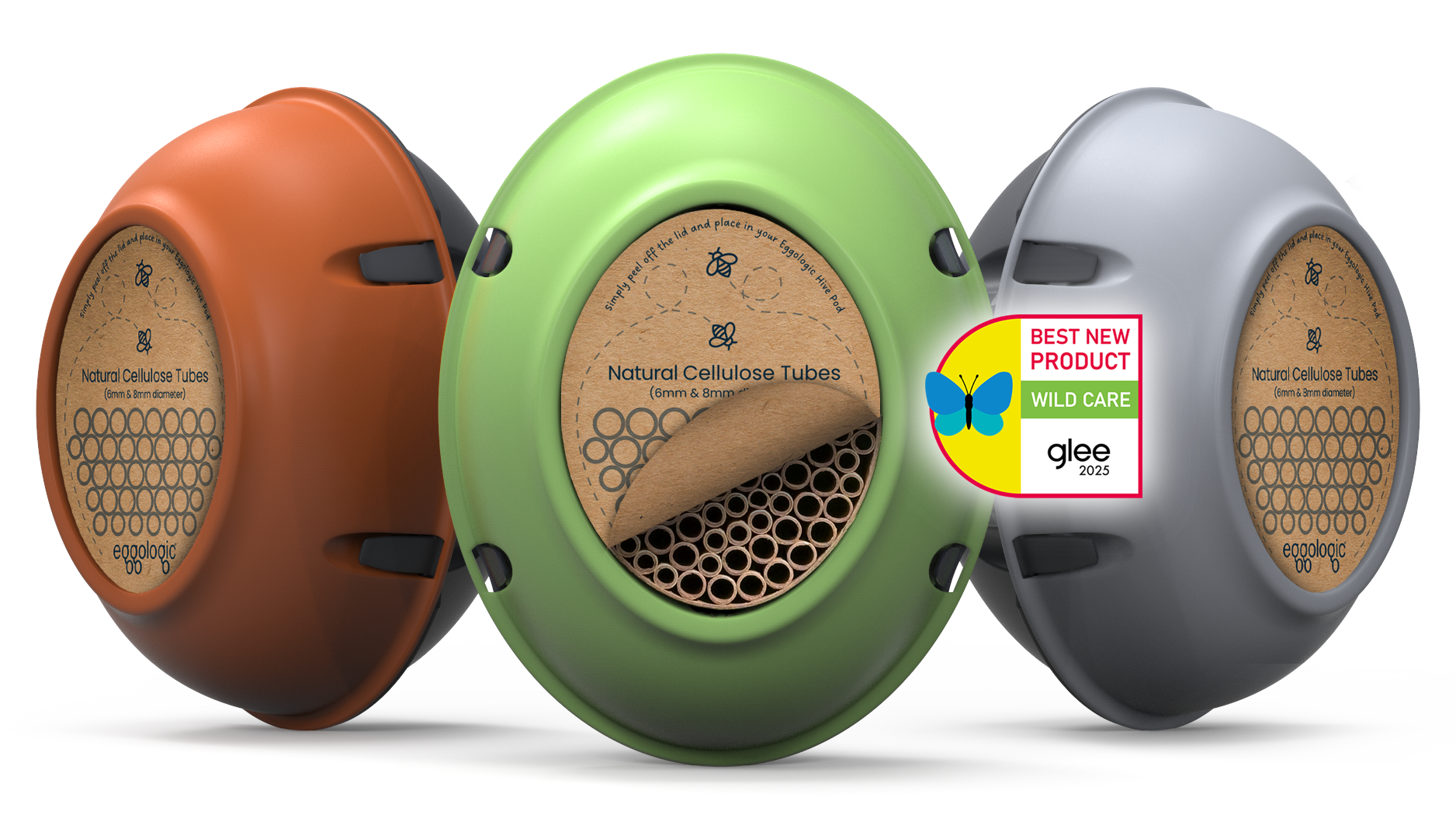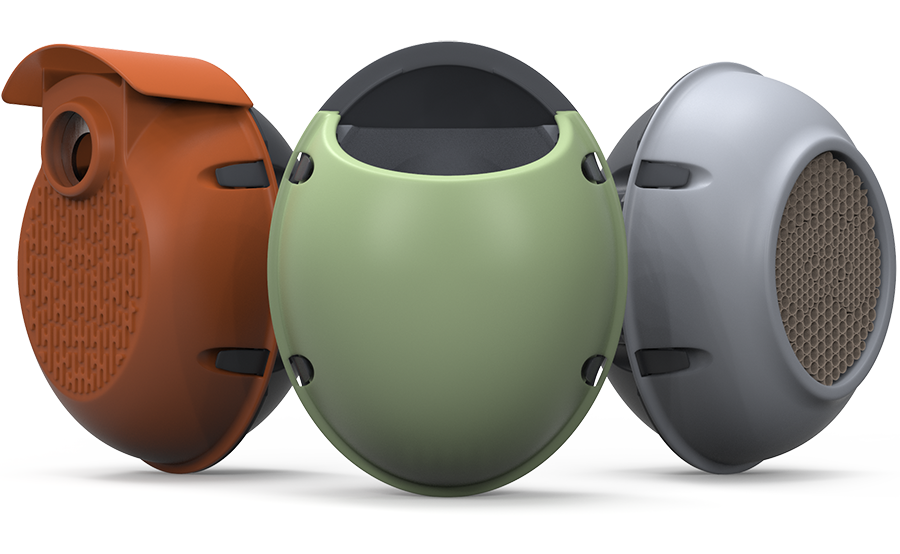
Hive Pod Quick Start Guide
Time to roll out the welcome mat for your new winged tenants. Setting up your Hive Pod is easy—follow these steps and you’ll be the talk of the bee world in no time. Click the “+” to dive in and get buzzing, baby.
Step 1: Remove Packaging
First remove your Hive pod from its 100% recyclable box or store packaging.
NOTE: A mounting screw for securing the pod to a wood surface is included on the packaging. Make sure to keep this for mounting.

Step 2: Remove Front Shell
Before mounting, the face shell and inside contents must first be removed. To remove the face shell, follow these simple steps:
-
Place your thumbs under the top two gray fastening tabs (as shown) and press gently outward to release the front shell.

-
With your index fingers, push the front shell forward to separate from the back shell.

-
Repeat steps A and B on the lower two fastening tabs to fully release and remove the front shell.

Step 3: Wall Mounting
-
Place the back (mounting) shell on a flat, vertical wood wall and secure it in place with a handheld screwdriver using the provided mounting screw.
IMPORTANT: If securing to a wall made of a material other than wood, be sure to use the appropriate mounting hardware for that specific material (not included).

-
Align the Hive Shell with the fastening arms on the Back Shell and snap into place.

-
Remove the paper and cardboard cover on the oval tube insert.
-
As you will see, the paper tubes inside the tube insert are loosely packed. This is to allow you to place several small, 10-18mm length sticks (we recommend 5-8 small sticks or reeds collected from your garden) between the tubes in several places. This will provide orientation assistance for the bees when locating their nesting tubes and also help to keep the tubes firmly packed inside the oval sleeve.
NOTE: Be sure to place the sticks BETWEEN the tubes, not inside of them.
- Align the tube insert with the center opening and press into place.
 Your Hive pod is now ready for the bees!
Your Hive pod is now ready for the bees!
Selecting the right spot for your Hive pod is incredibly important for both attracting solitary bees to the Hive pod as well as ensuring that the bees and their offspring inhabiting it will flourish.
Please follow these guidelines when considering where to place your Hive pod.
1: Direction
In the UK and Europe, bee hotels should always face between south and southeast to capture the morning and early day sun and avoid strong westerly winds and rain.

Avoid North-facing!
A North-facing bee hotel will not get the sun and warmth that bees and developing offspring favor, and will usually be ignored by solitary bees
Avoid West-facing!
A west-facing bee hotel is exposed to prevailing winds and rain, which can make the tubes unfavorably wet and cold.
2: Height & Environment

The Hive pod, like any bee hotel, be hung at least 3 feet (1 metre) off the ground to protect it from predators. The maximum height should be low enough to allow you to view and access the hotel for inspection and maintenance (replacing the seasonal insert).
Always make sure the Hive pod is securely mounted to ensure it isn't moved by the wind.
The ideal environment for a bee hotel should have:
- Shelter - a spot that is protected from strong winds and excessive rain. Under the eaves of a house or on a southern or southeastern-facing wall is a good option
- Accessibility - make sure there is no vegetation growing at least 10 feet (3 metres) front of the entrance that could block easy visibility or access by the bees
- Food nearby - solitary bees are not far ranging bees, and will spend the majority of their lives within a 200-metre radius. For this reason, it's a good idea to place the bee hotel should be near a source of nectar and pollen-rich flowers.
Some of our favorite pollinator-friendly flowers (which also grow great in our Planter pod) include:Catmint Hyssop Sedum Chives Marjoram Thyme Common Thyme Oregano Zinnias
Taking excellent care of our solitary bees is easy with the Hive Pod. This simple calendar of care-giving guidelines will help you know when to hang and maintain your Hive pod and how to care for bee cocoons during the winter until they hatch in the spring!



